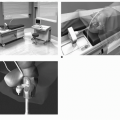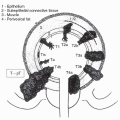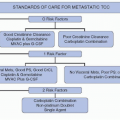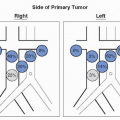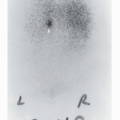References
1. Einhorn LH, Donohue JP. Cisdiamminedichloroplatinum, vinblastine and bleomycin combination chemotherapy in disseminated testicular cancer. Ann Intern Med 1977;87:293-298.
2. Einhorn LH. Testicular cancer as a model for a curable neoplasm: the Richard and Hinda Rosenthal Foundation Award Lecture. Cancer Res 1981;41:3275-3280.
3. Williams SD, Birch R, Einhorn LH, et al. Treatment of disseminated germ-cell tumors with cisplatin, bleomycin, and either vinblastine or etoposide. N Engl J Med 1987;316:1435-1440.
4. Bosl GJ, Geller NL, Cirrincione C, et al. Multivariate analysis of prognostic variables in patients with metastatic testicular cancer. Cancer Res 1983;43:3403-3407.
5. Birch R, Williams S, Cone A, et al. Prognostic factors for favorable outcome in disseminated germ cell tumors. J Clin Oncol 1986;4:400-407.
6. Levi JA, Thomson D, Sandeman T, et al. A prospective study of cisplatin-based combination chemotherapy in advanced germ cell malignancy: role of maintenance and long-term follow-up. J Clin Oncol 1988;6:1154-1160.
7. Stoter G, Sylvester R, Sleijfer DT, et al. Multivariate analysis of prognostic variables in patients with disseminated non-seminomatous testicular cancer: results from an EORTC multi-institutional study. Cancer Res 1987;47:2714-2718.
8. Medical Research Council Working Party on Testicular Tumours. Prognostic factors in advanced germ-cell tumours: results of a multicentre study. Lancet 1985;1:8-11.
9. International Germ Cell Cancer Collaborative Group. International germ cell consensus classification: a prognostic factor-based staging system for metastatic germ cell cancers. J Clin Oncol 1997;15:594-603.
10. De Wit R, Roberts JT, Wilkinson PM, et al. Equivalence of three or four cycles of bleomycin, etoposide, and cisplatin chemotherapy and of 3- or 5-day schedule in good-prognosis germ cell cancer: a randomized study of the European Organization for Research and Treatment of Cancer Genitourinary Tract Cancer Cooperative Group and the Medical Research Council. J Clin Oncol 2001;19:1629-1640.
11. Baniel J, Foster RS, Gonin R, et al. Late relapse of testicular cancer. J Clin Oncol 1995;13:1170-1176.
12. Einhorn LH, Williams SD, Loehrer PJ, et al. Evaluation of optimal duration of chemotherapy in favorable-prognosis disseminated germ cell tumors: a Southeastern Cancer Study Group Protocol. J Clin Oncol 1989;7:387-391.
13. Saxman SB, Finch D, Gonin R, et al. Long-term follow-up of a phase III study of three versus four cycles of bleomycin, etoposide, and cisplatin in favorable-prognosis germ-cell tumors: the Indiana University Experience. J Clin Oncol 1998;16:702-706.
14. De Wit R, Stoter G, Kaye SB, et al. Importance of bleomycin in combination chemotherapy for good-prognosis testicular non-seminoma: a randomized study of the European Organization for Research and Treatment of Cancer Genitourinary Tract Cancer Cooperative Group. J Clin Oncol 1997;15:1837-1843.
15. Loehrer PJ Sr, Johnson D, Elson P, et al. Importance of bleomycin in favorable-prognosis disseminated germ cell tumors: an Eastern Cooperative Oncology Group Trial. J Clin Oncol 1995;13:470-476.
16. Sleijfer S. Bleomycin-induced pneumonitis. Chest 2001;120:617-624.
17. O’Sullivan JM, Huddart RA, Norman AR, et al. Predicting the risk of bleomycin lung toxicity in patients with germ-cell tumours. Ann Oncol 2003;14:91-96.
18. Vogelzang N, Bosl GJ, Johnson K, et al. Raynaud’s phenomenon—a common toxicity after combination chemotherapy for testicular cancer. Ann Intern Med 1981;95:288-292.
19. Berger CC, Bokemeyer C, Schneider M, et al. Secondary Raynaud’s phenomenon and other late vascular complications following chemotherapy for testicular cancer. Eur J Cancer 1995;31A:2229-2238.
20. Nichols CR, Breeden ES, Loehrer PJ, et al. Secondary leukemia associated with a conventional dose of etoposide: review of serial germ cell tumor protocols. J Natl Cancer Inst 1993;85:36-40.
21. Bokemeyer C, Schmoll HJ. Treatment of testicular cancer and the development of secondary malignancies. J Clin Oncol 1995;13:283-292.
22. Hesketh PJ, Grunberg SM, Gralla RJ, et al. The oral neurokinin-1 antagonist aprepitant for the prevention of chemotherapy-induced nausea and vomiting: a multinational, randomized, double-blind, placebo-controlled trial in patients receiving high-dose cisplatin—the Aprepitant Protocol 052 Study Group. J Clin Oncol 2003;21:4112-4119.
23. De Wit R, Herrstedt J, Rapoport B, et al. Addition of the oral NK1 antagonist aprepitant to standard antiemetics provides protection against nausea and vomiting during multiple cycles of cisplatin-based chemotherapy. J Clin Oncol 2003;21:4105-4111.
24. Meijer S, Mulder NH, Sleijfer DT, et al. Nephrotoxicity of cis-diamminedichloride platinum (CDDP) during remission-induction and maintenance chemotherapy of testicular carcinoma. Cancer Chemother Pharmacol 1982;8:27-30.
25. Fosså SD, Aass N, Winderen M, et al. Long-term renal function after treatment for malignant germcell tumours. Ann Oncol 2002;13:222-228.
26. Cersosimo RJ. Cisplatin neurotoxicity. Cancer Treat Rev 1989;16:195-211.
27. Strumberg D, Brügge S, Korn MW, et al. Evaluation of long-term toxicity in patients after cisplatin-based chemotherapy for nonseminomatous testicular cancer. Ann Oncol 2002;13:229-236.
28. Levi JA, Raghavan D, Harvey V et al., Australian Germ Cell Trial Group. The importance of bleomycin in combination chemotherapy for good-prognosis germ cell carcinoma. J Clin Oncol 1993;11:1300-1305.
29. Xiao H, Mazumbar M, Bajorin DF, et al. Long-term follow-up of patients with good risk germ-cell tumors treated with etoposide and cisplatin. J Clin Oncol 1997;15:2553-2558.
30. Hinton S, Catalano PJ, Einhorn LH, et al. Cisplatin, etoposide and either bleomycin or ifosfamide in the treatment of disseminated germ cell tumors. Cancer 2003;97:1869-1875.
31. De Wit R, Stoter G, Sleijfer DT, et al. Four cycles of BEP vs four cycles of VIP in patients with intermediate prognosis metastatic testicular nonseminoma: a randomized study of the EORTC Genitourinary Tract Cancer Cooperative Group. Br J Cancer 1998;78:828-832.
32. Bajorin DF, Sarosdy MF, Pfister DG, et al. Randomized trial of etoposide and cisplatin versus etoposide and carboplatin in patients with good-risk germ cell tumors: a multiinstitutional study. J Clin Oncol 1993;11:598-606.
33. Bosl GJ, Bajorin DF. Etoposide plus carboplatin or cisplatin in good-risk patients with germ cell tumors: a randomized comparison. Semin Oncol 1994;21(5 Suppl 12):61-64.
34. Horwich A, Sleijfer DT, Fosså SD, et al. Randomized trial of bleomycin, etoposide, cisplatin compared with bleomycin, etoposide, carboplatin in good-prognosis metastatic nonseminomatous germ cell cancer: a Multiinstitutional Medical Research Council/European Organization for Research and Treatment of Cancer Trial. J Clin Oncol 1997;15:1844-1852.
35. Fosså SD, De Wit R, Roberts JT, et al. Quality of life in good prognosis patients with metastatic germ cell cancer: a prospective study of the European Organization for Research and Treatment of Cancer Genitourinary Group/Medical Research Council Testicular Cancer Study Group (30941/TE20). J Clin Oncol 2003;21:1107-1118.
36. Toner G, Stockler M. Comparison of two standard chemotherapy regimens for good prognosis germ cell tumours: a randomised trial. Lancet 2001;357:739-745.
37. Bosl GJ, Geller NL, Bajorin D, et al. A randomized trial of etoposide + cisplatin versus vinblastine + bleomycin + cisplatin + cyclophosphamide + dactinomycin in patients with good-prognosis germ cell tumors. J Clin Oncol 1988;6:1231-1238.
38. Culine S, Kerbrat P, Kramar A, et al. Refining the optimal chemotherapy regimen for goodrisk metastatic nonseminomatous germ-cell tumors: a randomized trial of the genitor-Urinary Group of the French Federation of Cancer Centers (GETUG T93BP). Ann Oncol 2007;18:917-924.
39. De Wit R. Refining the optimal chemotherapy regimen in good prognosis germ cell cancer: interpretation of the current body of knowledge. J Clin Oncol 2007;28:4346-4349.
40. Horwich A, Oliver RTD, Wilkinson PM, et al. A medical research council randomised trial of single agent carboplatin versus etoposide and cisplatin for advanced metastatic seminoma. Br J Cancer 2000;83:1623-1629.
41. Amato RJ, Ellerhorst J, Banks M, et al. Carboplatin and ifosfamide and selective consolidation in advanced seminoma. Eur J Cancer 1995;31A:2223-2228.
42. Sleijfer S, Willemse PH, De Vries EG, et al. Treatment of advanced seminoma with cyclophosphamide, vincristine and carboplatin on an outpatient basis. Br J Cancer 1996;74:947-950.
43. Mencel PJ, Motzer RJ, Mazumdar M, et al. Advanced seminoma: treatment results, survival, and prognostic factors in 142 patients. J Clin Oncol 1994;12:120-126.
44. Logothetis CJ, Samuels ML, Ogden SL, et al. Cyclophosphamide and sequential cisplatin for advanced seminoma: long-term follow-up in 52 patients. J Urol 1987;138:789-794.
45. Fosså SD, Droz JP, Stoter G, et al. Cisplatin, vincristine and ifosfamide combination chemotherapy of metastatic seminoma: results of EORTC trial 30874. Br J Cancer 1995;71:619-624.
46. Travis LB, Curtis RE, Storm H, et al. Risk of second malignant neoplasms among long-term survivors of testicular cancer. J Natl Cancer Inst 1997;89:1429-1439.
47. Van den Belt-Dusebout, de Wit R, Gietema JA, et al. Treatment-specific risks of second malignancies and cardiovascular disease in 5-year survivors of testicular cancer. J Clin Oncol 2007;25:4370-4378.
48. Meinardi MT, Gietema J, Van der Graaf WT, et al. Cardiovascular morbidity in long-term survivors of metastatic testicular cancer. J Clin Oncol 2000;18:1725-1732.
49. Huddart RA, Norman A, Shahidi M, et al. Cardiovascular disease as a long-term complication of treatment for testicular cancer. J Clin Oncol 2003;21:1513-1523.
50. Van den Belt-Dusebout AW, Nuver J, de Wit R, et al. Long-term risk of cardiovascular disease in 5-year survivors of testicular cancer. J Clin Oncol 2006;24:467-475.




